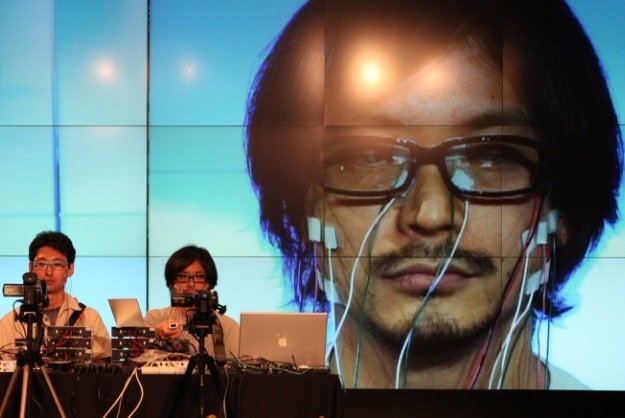One piece of interactive art that has caught my attention is the “Face Instrument”, “Face Visualiser”, by Japanese artist Daito Manabe. Inspired by the work of French researcher Guillaume-Benjamin-Amand Duchenne and Australian artist Stelarc, Daito Manabe decided to play with the interaction between electronics and the muscular structure of the human face, and by sending different electronic signals to wires taped to different parts of the human face, he could control the facial expressions of the participants. In addition, he added music tones to different wires and created a musical piece with the facial features of the participants.
The experiment works 2 ways, either Daito Manabe could send electronic signals to the participants and control their facial expressions (thus giving the participants no opinion/ control whatsoever), or the participants could move their facial features and send music feedback to Daito Manabe. It is interesting as there are different combinations and feedback depending on who is the main controller of the work. Also, I feel that this work is a prime example of using scientific elements (the human anatomy and electronic knowledge) to create a work of art that is light-hearted and can be appreciated by different types of people.
Concept wise, Daito Manabe was trying to highlight how eternally influenced expressions stand in contrast to a human smile caused by real emotions (everythingvisual.net) and to create music out of the human nervous system.
I feel that this work does highlight the manipulation of expression physically, and how external influence can change your exterior appearance, but not your internal emotions. In addition, with the usage of this device, the human expression can be cloned from one person to another, diminishing the uniqueness of the human expression. It highlights how technology can advance to the stage where even humanistic expressions can be manipulated, and the fact that true emotion may not be portrayed physically anymore.
On another viewpoint, this work can also highlight the importance of human emotion, as Daito Manabe’s collaborator said “we can make fake smile with sending electric stimulation signals from computer to face, but no one can make real smile without humans emotion.” Ultimately, no matter how much electronic signals can manipulate the human expression, the most natural expression on the human face can only come from true emotion.
Musically, this artwork has opened up many paths for musical exploration, as the human face was not thought of as a contraption for music expression. If the contraption was used in the format where the participant created expressions which produced different sounds, this work could be used to show how natural expression produced different sound feedback. It also provides a closer connection between the participant and the music they have created.
All in all, this work is a good way of portraying the importance of true emotion and the manipulation of human expression through electronic signals and it has inspired me to think of how much the human structure can be manipulated by different types of contraptions and devices, while exploring many more facial expressions the human face can make.
Resources
http://everythingvisual.net/?p=404
http://www.daito.ws/en/work/smiles.html
https://gizmodo.com/turns-out-the-human-face-makes-for-a-pretty-good-musica-5975963

